spare tire CHEVROLET TRACKER 1998 1.G Owners Manual
[x] Cancel search | Manufacturer: CHEVROLET, Model Year: 1998, Model line: TRACKER, Model: CHEVROLET TRACKER 1998 1.GPages: 386, PDF Size: 21.17 MB
Page 161 of 386
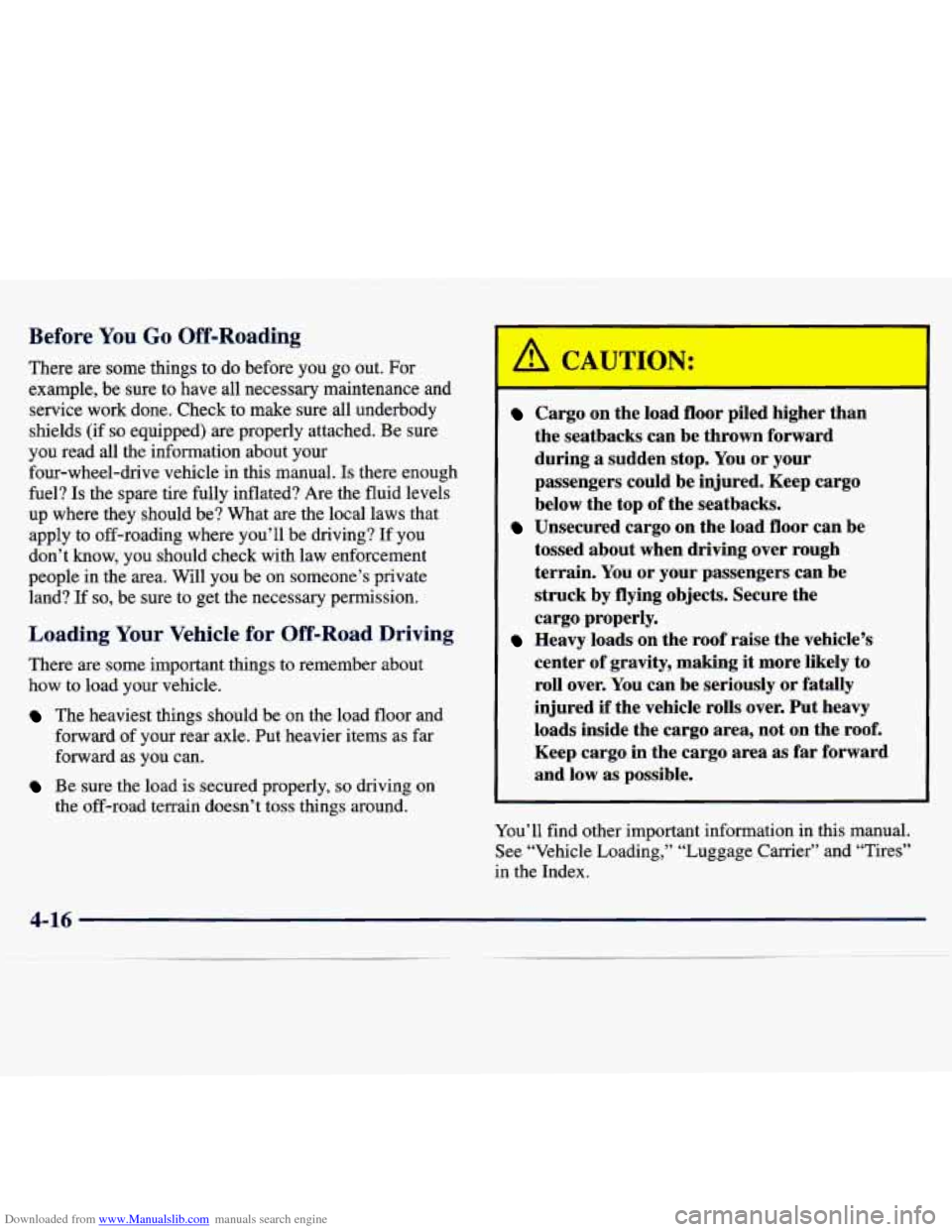
Downloaded from www.Manualslib.com manuals search engine Before You Go Off-Roading
There are some things to do before you go out. For
example, be sure to have all necessary maintenance and service work done. Check to make sure all underbody
shields (if
so equipped) are properly attached. Be sure
you read all the information about your
four-wheel-drive vehicle in this manual. Is there enough
fuel?
Is the spare tire fully inflated? Are the fluid levels
up where they should be? What are the local laws that
apply to off-roading where you’ll be driving? If you
don’t know, you should check with law enforcement
people in the area. Will you be on someone’s private land? If
so, be sure to get the necessary permission.
Loading Your Vehicle for Off-Road Driving
There are some important things to remember about
how
to load your vehicle.
The heaviest things should be on the load floor and
forward of your rear axle. Put heavier items as far
forward as you can.
Be sure the load is secured properly, so driving on
the off-road terrain doesn’t
toss things around.
Cargo on the load floor piled higher than
the seatbacks can be thrown forward
during a sudden stop. You or your
passengers could be injured. Keep cargo
below the top of the seatbacks.
Unsecured cargo on the load floor can be
tossed about when driving over rough
terrain. You
or your passengers can be
struck by flying objects. Secure the
cargo properly.
Heavy loads on the roof raise the vehicle’s
center of gravity, making
it more likely to
roll over. You can be seriously or fatally
injured if the vehicle rolls over.
Put heavy
loads inside the cargo area, not on the roof.
Keep cargo in the cargo area
as far forward
and low as possible.
You’ll find other important information in this manual. See “Vehicle Loading,” “Luggage Carrier” and “Tires\
”
in the Index.
Page 224 of 386
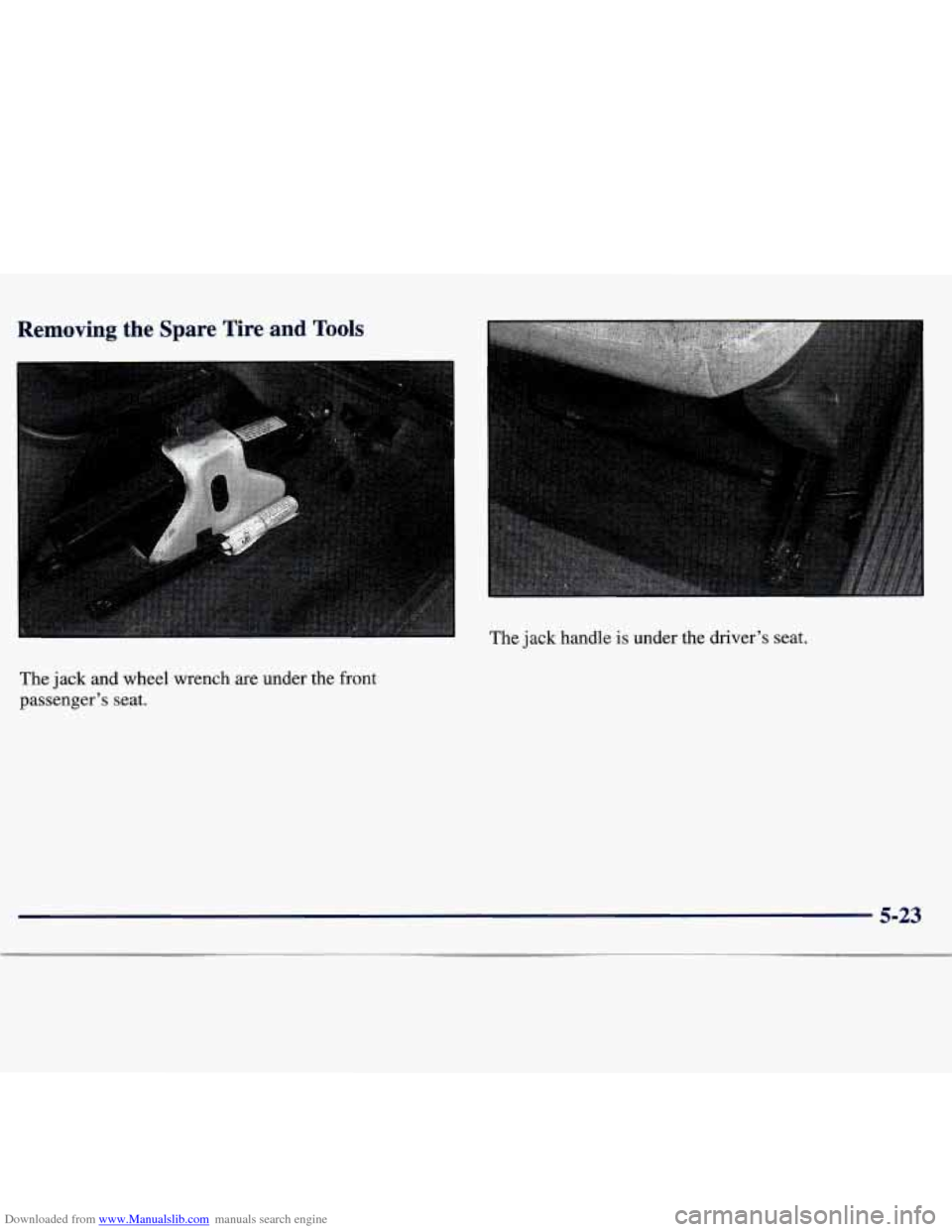
Downloaded from www.Manualslib.com manuals search engine Removing the Spare Tire and Tools
The jack handle is under the driver’s seat.
The jack and wheel wrench are under the front
passenger’s seat.
5-23
Page 225 of 386

Downloaded from www.Manualslib.com manuals search engine The tools you'll be using include the jack (A), jack
handle
(B) and wheel wrench (C).
The spare tire is mounted on your tailgate. Pull the cover
off of the spare tire.
Attach the jack handle to the jack.
Turn the jack handle
to the right to raise the lift head.
5-24
Page 226 of 386
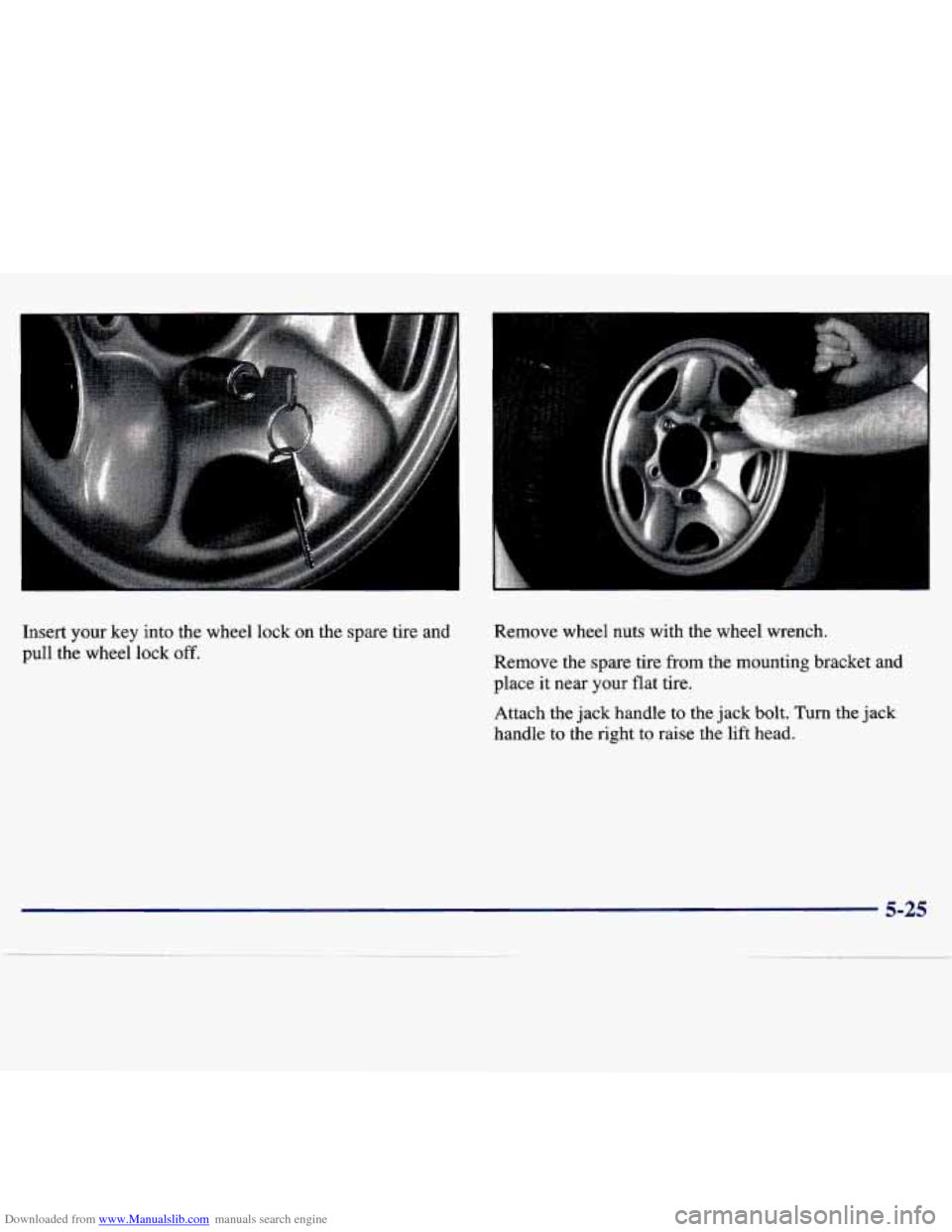
Downloaded from www.Manualslib.com manuals search engine Insert your key into the wheel lock on the spare tire and
pull the wheel lock
off.
Kemove wheel nuts with the wheel wrench.
Remove the spare tire from the mounting bracket and
place it near your flat tire.
Attach the jack handle to the jack bolt.
Turn the jack
handle to the right to raise the lift head.
5-25
Page 227 of 386
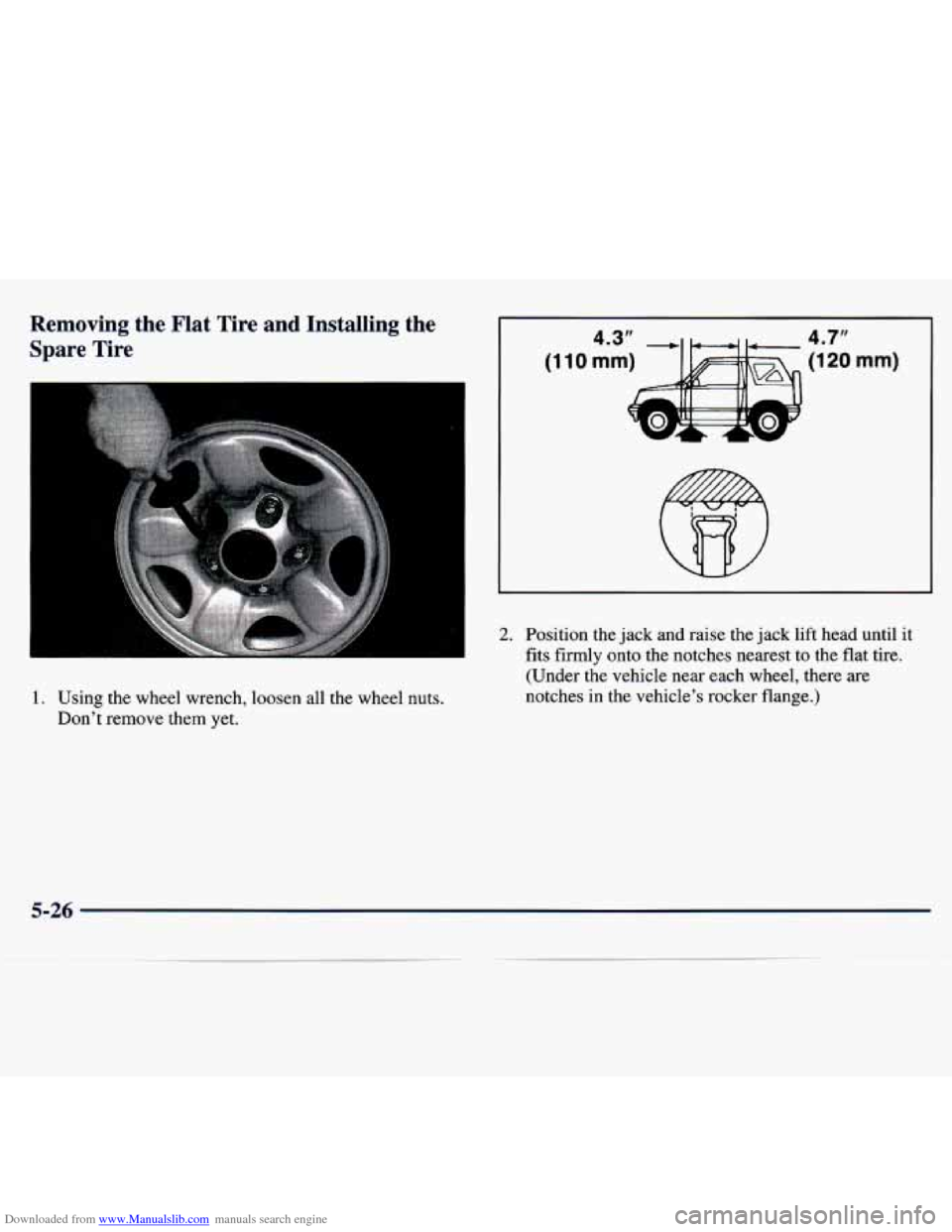
Downloaded from www.Manualslib.com manuals search engine Removing the Flat Tire and Installing the Spare Tire
1. Using the wheel wrench, loosen all the wheel nuts.
Don't remove them yet.
2. Position the jack and raise the jack lift head until it
fits firmly onto the notches nearest to the flat tire.
(Under the vehicle near each wheel, there are
notches in the vehicle's rocker flange.)
5-26
Page 228 of 386
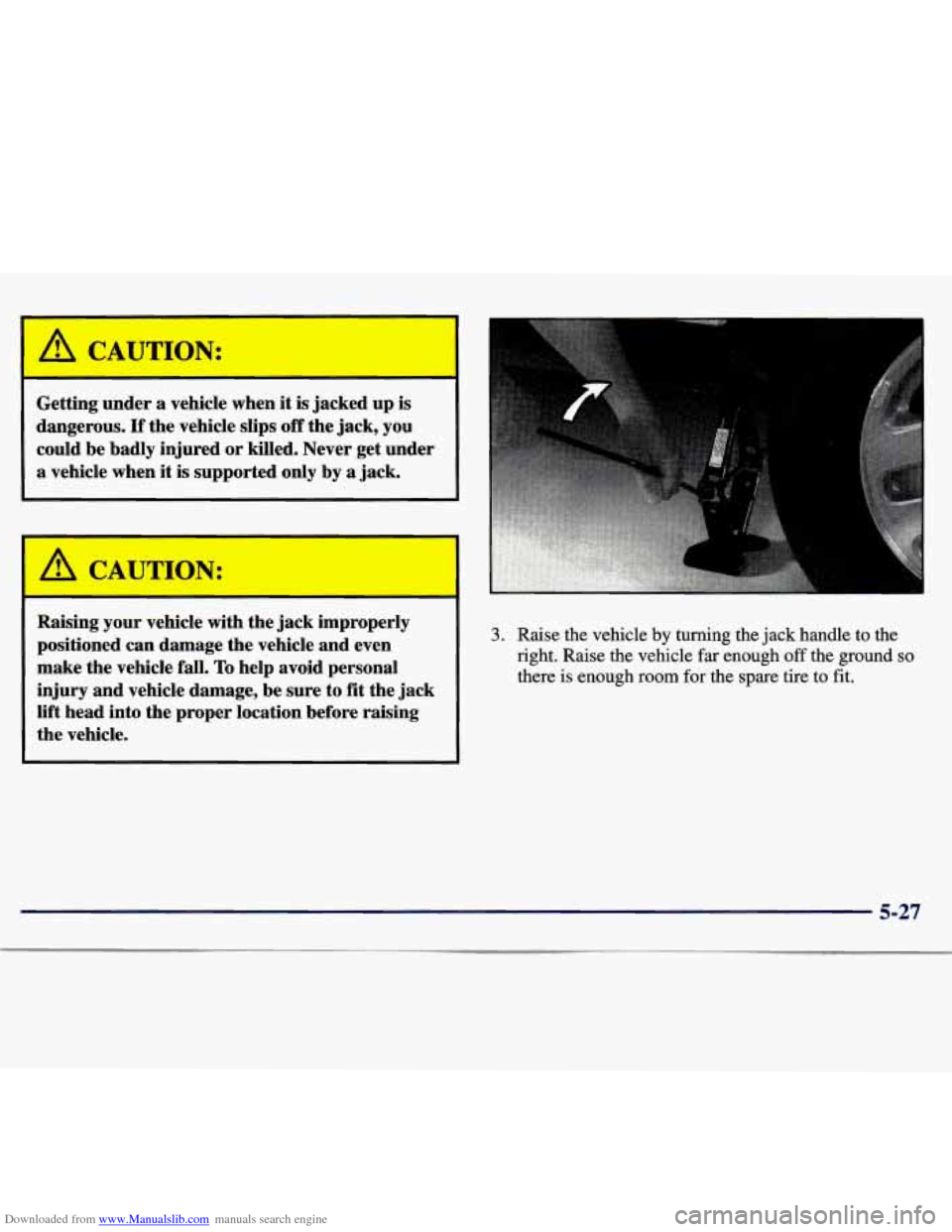
Downloaded from www.Manualslib.com manuals search engine A CAUTION:
Getting under a vehicle when it is jacked up is
dangerous.
If the vehicle slips off the jack, you
could be badly injured or killed. Never get under
a vehicle when
it is supported only by a jack.
-
A CAUTION:
Raising your vehicle with the jack improperly
positioned can damage the vehicle and even
make the vehicle fall.
To help avoid personal
injury and vehicle damage, be sure to fit the jack
lift head into the proper location before raising
the vehicle.
3. Raise the vehicle by turning the jack handle to the
right. Raise the vehicle
far enough off the ground so
there is enough room for the spare tire to fit.
5-27
Page 229 of 386
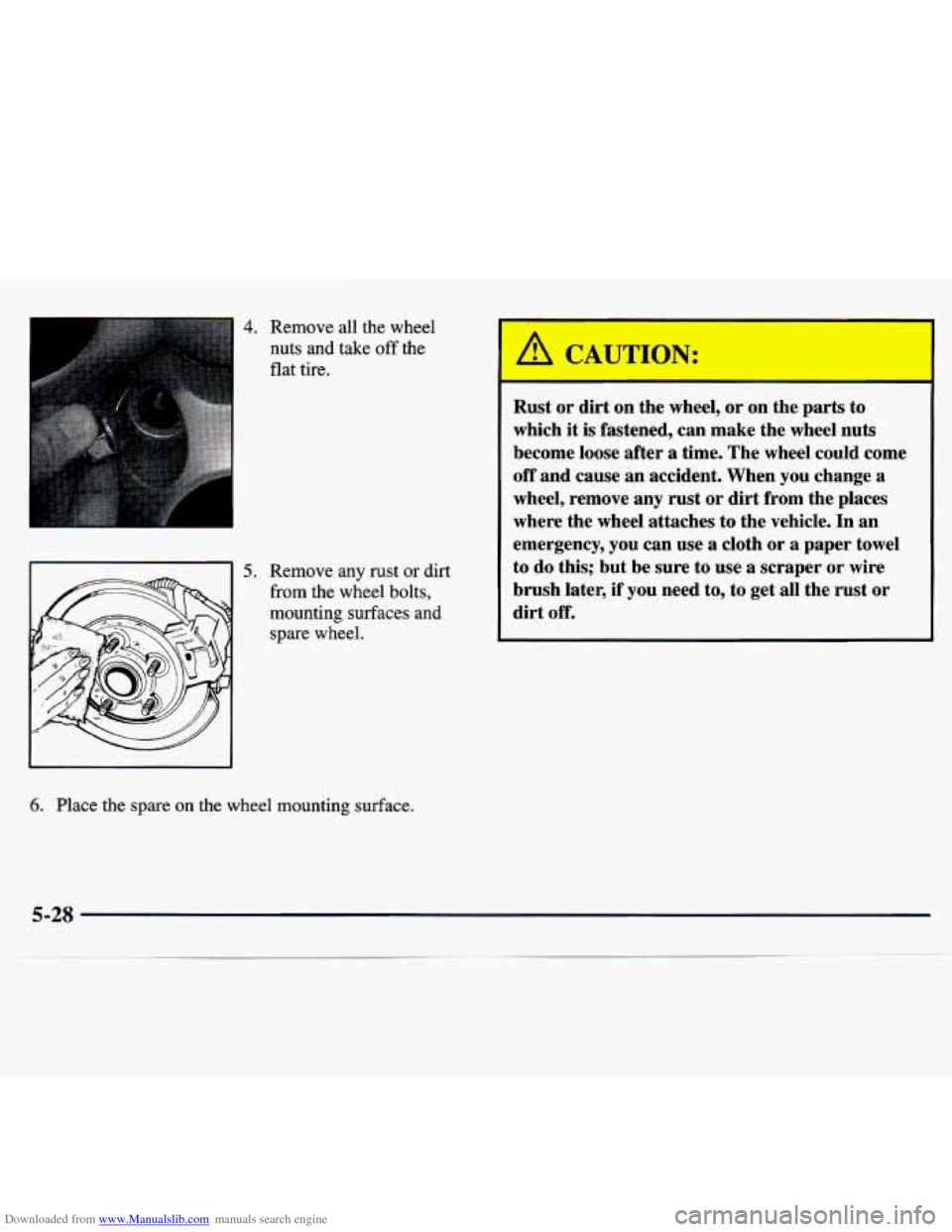
Downloaded from www.Manualslib.com manuals search engine 4. Remove all the wheel
nuts and take
off the
flat
tire.
Remove any rust or dirt
from the wheel bolts,
mounting surfaces and
spare wheel. Rust
or dirt on the wheel, or on me parts to
which
it is fastened, can make the wheel nuts
become loose after
a time. The wheel could come
off and cause an accident. When you change
a
wheel, remove any rust or dirt from the places
where the wheel attaches to the vehicle. In an
emergency, you can use
a cloth or a paper towel
to do this; but be sure to use
a scraper or wire
brush later, if you need to, to get all the rust or
dirt
off.
--.
6. Place the spare on the wheel mounting surface.
5-28
Page 232 of 386
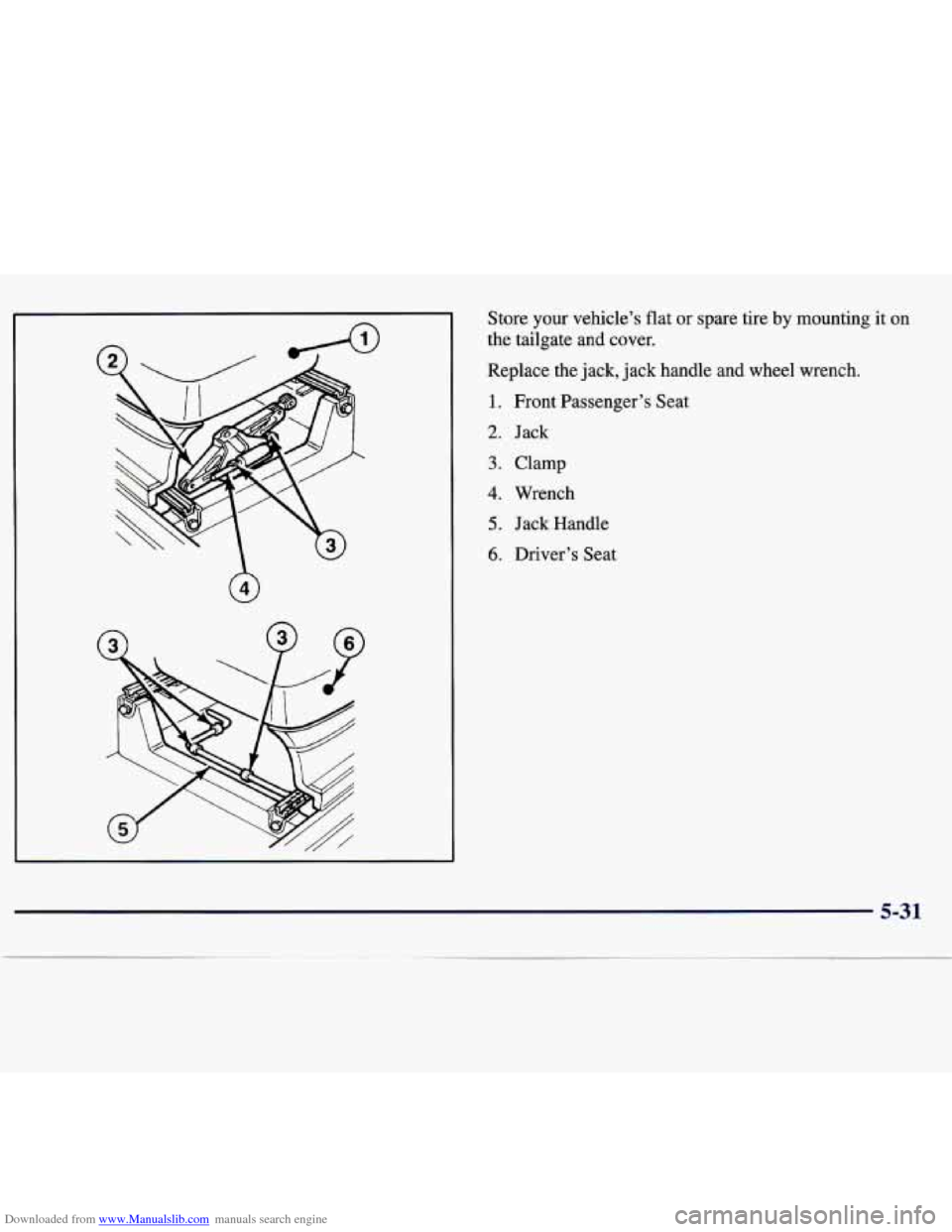
Downloaded from www.Manualslib.com manuals search engine Store your vehicle’s flat or spare tire by mounting it on
the tailgate and cover.
Replace the jack, jack handle and wheel wrench.
1. Front Passenger’s Seat
2. Jack
3. Clamp
4. Wrench
5. Jack Handle
6. Driver’s Seat
5-31
Page 278 of 386

Downloaded from www.Manualslib.com manuals search engine Inflation -- Tire Pressure
The Tire-Loading Information label, which is on the
driver’s door lock pillar, shows the correct inflation
pressures for your tires when they’re cold. “Cold”
means your vehicle has been sitting for at least three
hours or driven no more than
1 mile ( 1.6 km).
NOTICE:
Don’t let anyone tell you that underinflation or
overinflation
is all right. It’s not. If your tires
don’t have enough
air (underinflation), you can
get the following:
Too much flexing
Too much heat
Tire overloading
Bad wear
Bad handling
0 Bad fuel economy.
NOTICE: (Continued) NOTICE: (Continued)
If your tires have too much air
(overinflation),
you can get the following:
Unusual wear
Bad handling
0 Rough ride
Needless damage from road hazards.
When to Check Check your tires once
a month or more. Also, check
the tire pressure
of the spare tire.
How to Check
Use
a good quality pocket-type gage to check tire
pressure.
You can’t tell if your tires are properly inflated
simply by looking at them. Radial tires may look
properly inflated even when they’re underinflated.
Be sure to put the valve caps back on the valve stems. They help prevent leaks by keeping out dirt
and moisture.
Page 282 of 386
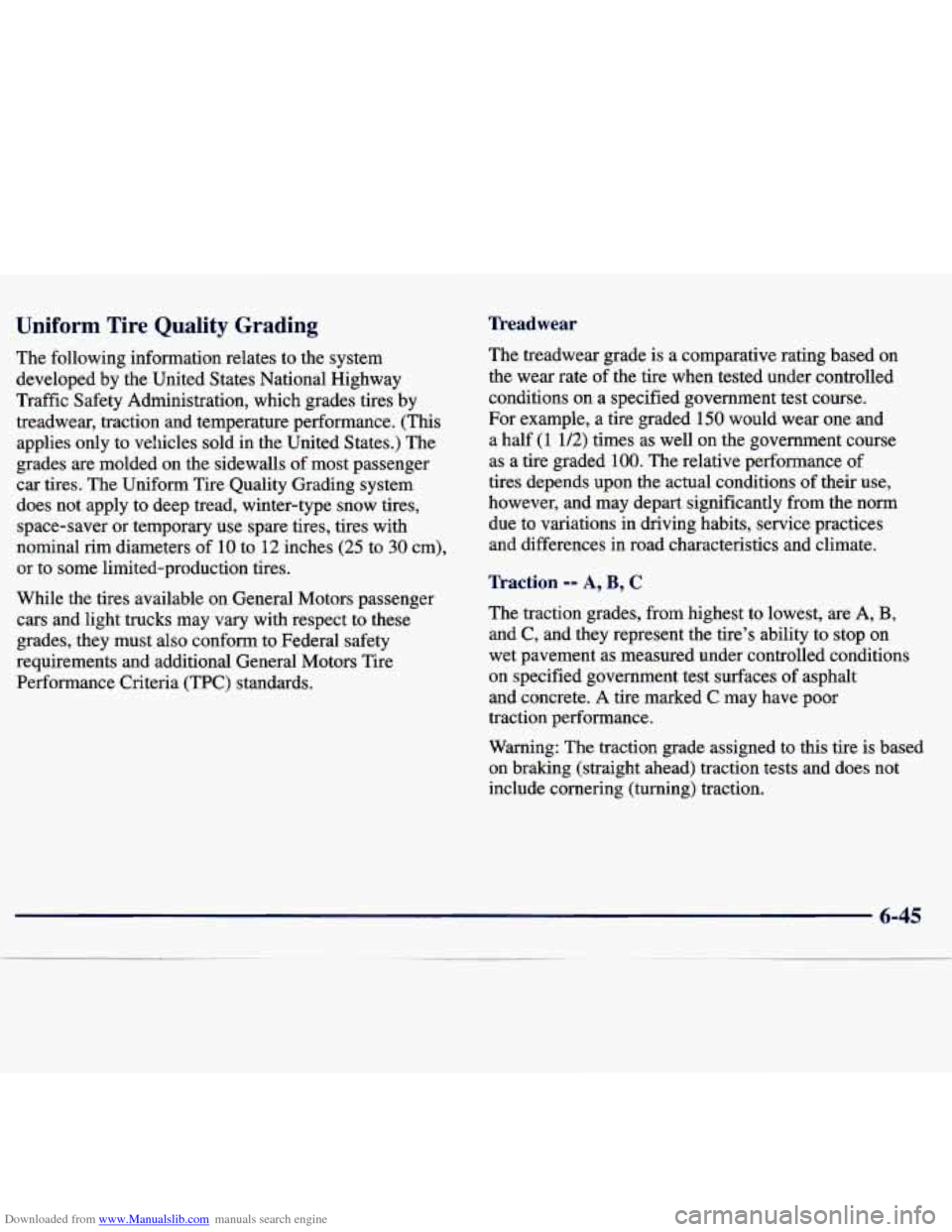
Downloaded from www.Manualslib.com manuals search engine Uniform Tire Quality Grading
The following information relates to the system
developed by the United States National Highway
Traffic Safety Administration, which grades tires by
treadwear, traction and temperature performance. (This applies only to vehicles sold in the United States.) The
grades are molded on the sidewalls of most passenger
car tires. The Uniform Tire Quality Grading system
does not apply to deep tread, winter-type snow tires,
space-saver or temporary use spare tires, tires with
nominal rim diameters of
10 to 12 inches (25 to 30 cm),
or to some limited-production tires.
While the tires available on General Motors passenger
cars and light trucks may vary with respect to these
grades, they must also conform to Federal safety
requirements and additional General Motors Tire
Performance Criteria
(PC) standards.
Treadwear
The treadwear grade is a comparative rating based on
the wear rate of the tire when tested under controlled
conditions on a specified government test course.
For example, a tire graded
150 would wear one and
a half (1 112) times as well on the government course
as a tire graded
100. The relative performance of
tires depends upon the actual conditions of their use,
however, and may depart significantly from the norm
due to variations in driving habits, service practices
and differences in road characteristics and climate.
Traction -- A, B, C
The traction grades, from highest to lowest, are A, B,
and C, and they represent the tire’s ability to stop on
wet pavement as measured under controlled conditions
on specified government test surfaces of asphalt
and concrete.
A tire marked C may have poor
traction performance.
Warning: The traction grade assigned to this tire is based
on braking (straight ahead) traction tests and does not
include cornering (turning) traction.
6-45